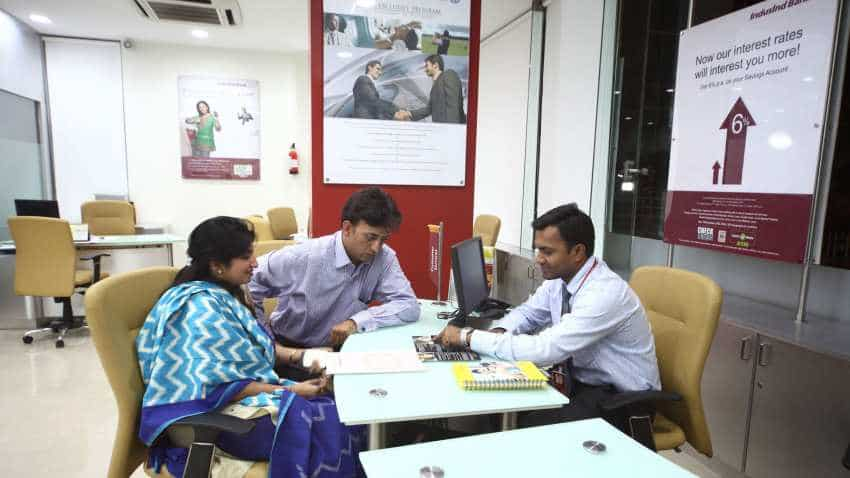How to get a loan: Believe it or not, but it may depend on how you use your cell phone
Banks are increasingly working with fintech companies to expand the inclusion of people into the formal credit system. Innovation is on the cards, and unconventional methods are being used to evaluate potential customers.

Fintech companies in India, especially those in the lending space, have seen a growth rate of 60-70%, on the back of increased push from various quarters to accelerate lending to people with minimal or no credit history.
But what does this mean for you as a customer? How do banks know if they can lend to you without making you jump through the proverbial rings? Banks are increasingly working with fintech companies to expand the inclusion of people into the formal credit system. Innovation is on the cards, and unconventional methods are being used to evaluate potential customers.
Address verification
For example, in a traditional loan set up, financial institutions have to do a physical verification of the loan seeker’s home address before giving the loan. But with alternative data points like e-commerce delivery address data, location of phone and pattern of its availability at specific time can also be used to verify home address. This helps borrowers to avail the loan quickly with less operational hassles.
Evaluation without credit score
If you have no credit score yet, do not despair. Credit scoring of loan seekers has emerged as one of the biggest areas where both banks and fintech companies are trying to use a combination of tech like Artificial Intelligence (AI), Machine Leaning (ML) and analytics to evaluate you. E-mails and mobile data help fintech companies provide lenders with insights into your consumption patterns, helping assign your credit score and also verification.
For example, if a bank that you are currently a customer with or another bank, gets data through bots and AI that you have entered a store where they have an easy EMI option, or a payment app collects data that you are more likely to use one credit card over another, it allows the bank to assess your reliability as a potential borrower. While all this is accelerating the entire loan processing chain, fintech companies and even banks have to take the customer’s consent to use his data seriously.
Customer segmentation through mobile usage, social media data
The penetration of smart phones among Indians has generated social profiles, which help them boost their own credit scores based on consumption patterns. In this context, customer segmentation is also an important area for lenders to offer the right type of services and loans to the consumers.
Unconventional methods such as social media data come in handy, because in India’s, only 25% of the population is registered with the credit bureau database. This leaves the other 75% of the population vulnerable to informal and secured loans, which are expensive. Even in Tier II and III towns, for example, the rapid uptake of mobile-based payment platforms has given a serious push to fintech players who can bridge the gap between the borrower and the lender by providing data on spending, geography of spending, and other consumption patterns. These social profiles are critical to risk evaluation of new customers and borrowers, who do not previously have any association with banks.
For banks, this cuts down on the number of hours that would be required in assessing a customer. It also eliminates the human error factor, which could be influenced or biased based on interactions. For example, an application tracking your EMI payment updates or your preferred payment modes cannot be manipulated by human bias to lower your credit score in AI modes.
Watch this Zee Business video
For you as a customer, once your personal banker has the basic data gleaned from AI, the amount of time it would take you to secure a loan is cut down by almost half. And since many of these sources for AI data already contain information such as Aadhar or PAN card numbers, it may also cut down the amount of paperwork you need to submit.
By: Darshan Shah
(The writer is MD, South Asia, LenddoEFL)
10:29 AM IST






 RBI Repo Rate cut announced; EMI payment delay to loan rates, check top 5 takeaways
RBI Repo Rate cut announced; EMI payment delay to loan rates, check top 5 takeaways SBI COVID Loan: State Bank of India opens emergency credit line to help borrowers fight Coronavirus
SBI COVID Loan: State Bank of India opens emergency credit line to help borrowers fight Coronavirus Top 6 things NBFCs must look at before they give loans to customers
Top 6 things NBFCs must look at before they give loans to customers SBI approves Suzlon Energy's Rs 12,700 crore debt-restructuring plea
SBI approves Suzlon Energy's Rs 12,700 crore debt-restructuring plea MSMEs bank loans: This is how you can make access to money easier
MSMEs bank loans: This is how you can make access to money easier